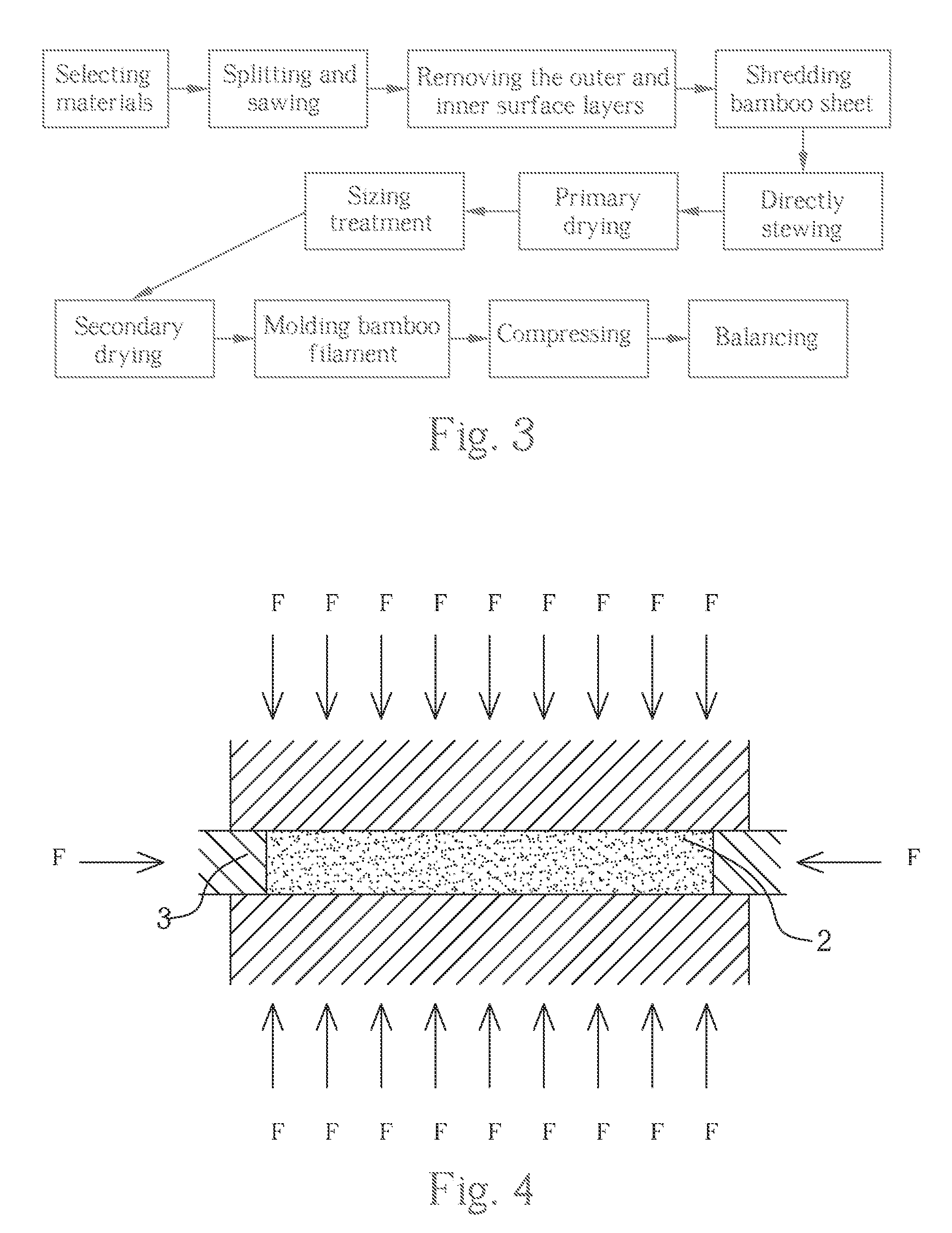Process for making a bamboo filament slab floor by opposite directional hot pressing
a technology of hot pressing and bamboo filament, which is applied in the direction of manufacturing tools, wood veneer joining, plant material mechanical work, etc., can solve the problems of shortening the service life of the floor, low raw material availability, and increasing the damage to the global forest resources, so as to achieve sufficient positive and side pressure, stable quality, and easy heat and cooling
- Summary
- Abstract
- Description
- Claims
- Application Information
AI Technical Summary
Benefits of technology
Problems solved by technology
Method used
Image
Examples
Embodiment Construction
[0021]To combine the drawings and the embodiments, the further description for the present invention will be exhibited hereinafter:
[0022]FIG. 1 exhibits the structure of existing ordinary bamboo block slab floor, wherein A displays strip structure overlapped and veneered with several layers by bamboo block of rectangle cross section paved horizontally, and B displays strip structure veneered by bamboo block of rectangle cross section paved longitudinally. The bamboo block floor made according to aforesaid process has high demand for selecting materials; the availability of bamboo timber is low and waste is high; organic matter in bamboo block is not fully removed, which will cause the occurrence of mildewing or rotting and shorten the service life; the differences between bamboo blocks will result in flexible deformation, insufficient hardness and weak resistance to abrasion.
[0023]FIG. 2 exhibits the compressing process to make the existing bamboo filament slab floor, namely, at nor...
PUM
 Login to View More
Login to View More Abstract
Description
Claims
Application Information
 Login to View More
Login to View More - R&D
- Intellectual Property
- Life Sciences
- Materials
- Tech Scout
- Unparalleled Data Quality
- Higher Quality Content
- 60% Fewer Hallucinations
Browse by: Latest US Patents, China's latest patents, Technical Efficacy Thesaurus, Application Domain, Technology Topic, Popular Technical Reports.
© 2025 PatSnap. All rights reserved.Legal|Privacy policy|Modern Slavery Act Transparency Statement|Sitemap|About US| Contact US: help@patsnap.com



